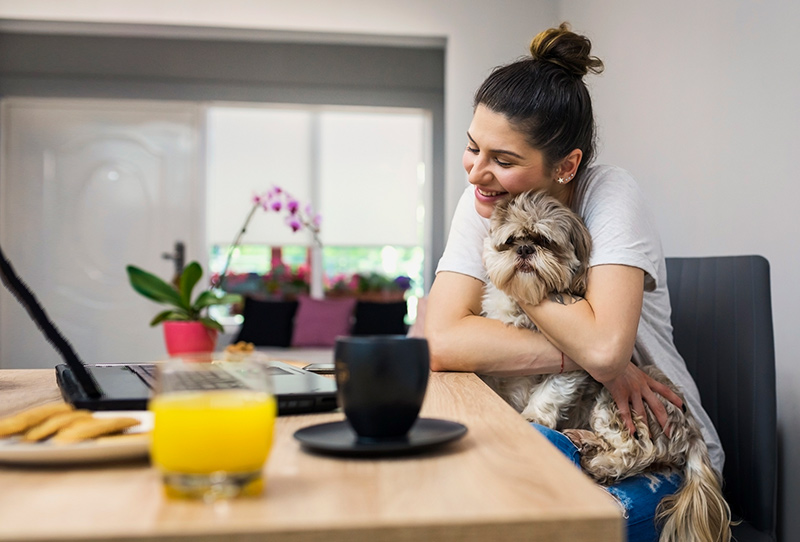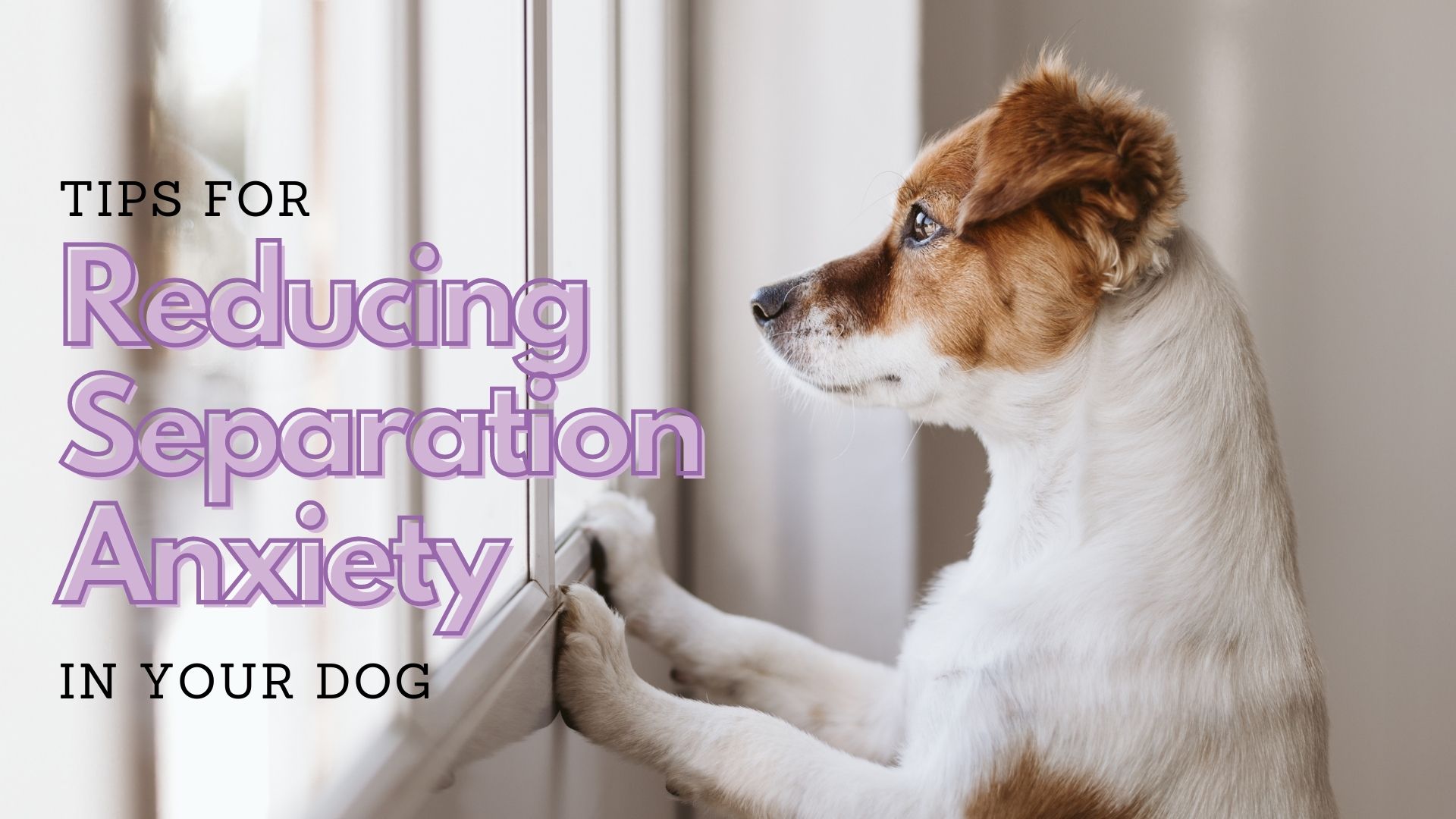Pets, like humans, can experience anxiety. It can affect their behavior and well-being.
Understanding pet anxiety is crucial for any pet owner. Just like humans, pets can feel stressed due to various reasons like loud noises, new environments, or separation. Recognizing the signs of anxiety in your furry friend is the first step towards helping them feel better.
In this blog post, we will explore practical tips to reduce pet anxiety. From creating a safe space to using calming techniques, these tips will help your pet feel more relaxed and happy. Your pet’s mental health is important, and with the right approach, you can make a significant difference in their lives. Let’s dive into these helpful tips to bring comfort to your beloved pet.
Also Read

Credit: www.heart.org
Recognizing Pet Anxiety
Recognizing pet anxiety is crucial for every pet owner. Anxiety in pets can lead to various health issues and behavioral problems. Understanding the signs can help you address the problem early and provide the necessary support to your furry friend.
Common Signs
There are several common signs that may indicate pet anxiety. These signs can vary from pet to pet, but some of the most frequent include:
- Excessive barking or whining
- Pacing or restlessness
- Hiding or seeking comfort
- Panting or drooling
- Destructive behavior
Behavioral Indicators
Behavioral indicators are important to watch for as they often signal anxiety. These can be:
- Changes in appetite: Your pet may eat less or more than usual.
- Increased aggression: An anxious pet might become more aggressive.
- Excessive grooming: Pets may groom themselves excessively, leading to bald spots.
- Accidents in the house: A house-trained pet may start having accidents.
- Clinginess: Your pet might follow you everywhere, seeking constant reassurance.
Recognizing these signs and indicators can help you take the necessary steps to reduce your pet’s anxiety. Always consult a veterinarian if you notice any worrying behaviors.
Creating A Safe Environment
Pets often feel anxious in new or stressful situations. Creating a safe environment can help reduce their anxiety. This involves providing comfortable spaces and reducing noise. These changes can make a big difference in your pet’s well-being. Here are some tips to get started.
Comfortable Spaces
A dedicated, comfortable space is important for your pet. This area should be quiet and away from foot traffic. Place a cozy bed or blanket in this space. Soft bedding can provide comfort and security. Make sure your pet can access this area easily. Avoid placing it near loud appliances or busy areas.
Include some of your pet’s favorite toys. Familiar items can help them feel safe. You can also add a piece of your clothing. Your scent can be very comforting to your pet. Change the bedding regularly to keep it clean and fresh. This will make the space more inviting.
Noise Reduction
Loud noises can be very stressful for pets. To reduce noise, close windows and doors. This can help block out external sounds. Use heavy curtains to muffle sounds from outside. Playing soft music can also help. It can mask harsh noises and create a calm atmosphere.
During noisy events, like fireworks, keep your pet indoors. Turn on a fan or white noise machine. These can help drown out loud sounds. Set up their comfortable space in the quietest part of the house. This will give them a place to retreat to and feel safe.
By following these tips, you can create a safe environment for your pet. This can greatly reduce their anxiety and improve their quality of life.
Routine And Consistency
Routine and consistency are vital for reducing pet anxiety. Pets feel secure and relaxed when they know what to expect each day. Establishing a regular schedule and predictable activities can help your furry friend feel more at ease.
Regular Schedules
A regular schedule can make a big difference in your pet’s life. Try to feed, walk, and play with your pet at the same times each day. This helps them know what to expect and when to expect it.
| Activity | Time |
|---|---|
| Feeding | 7:00 AM, 6:00 PM |
| Walk | 8:00 AM, 7:00 PM |
| Playtime | 4:00 PM |
Consistency in your pet’s routine can help minimize anxiety. If possible, keep the same schedule every day, even on weekends.
Predictable Activities
Predictable activities are another way to reduce pet anxiety. Engage in the same activities at the same times each day. For example:
- Morning walks
- Afternoon playtime
- Evening cuddles
Predictable activities help your pet feel more secure. They can look forward to these moments and feel comfort in their regularity.
Incorporate some enrichment activities as well. This can include puzzle toys, training sessions, or quiet time with a favorite blanket. These activities can keep your pet mentally stimulated and more relaxed.

Credit: mtnviewvets.com
Exercise And Physical Activity
Exercise and physical activity play a vital role in reducing pet anxiety. Active pets are often happier and healthier. They release pent-up energy that might otherwise turn into stress or destructive behavior. Below are some effective ways to ensure your pet stays active and anxiety-free.
Daily Walks
Daily walks are essential for reducing pet anxiety. Walks provide mental stimulation and physical exercise. They give pets the opportunity to explore new sights and smells. This can keep their mind engaged and reduce boredom. Consistent walking schedules also help establish a routine. This can make pets feel more secure and less anxious.
Interactive Play
Interactive play is another great way to reduce pet anxiety. Games like fetch or tug-of-war are fun and engaging. They allow pets to burn off energy and keep their minds active. Interactive toys, such as puzzle feeders, can also be beneficial. These toys challenge pets and provide mental stimulation. Regular play sessions can strengthen the bond between you and your pet. This can further help in reducing their anxiety.
Mental Stimulation
Mental stimulation is crucial for reducing pet anxiety. Keeping their minds active helps them stay calm and happy. It can prevent destructive behaviors caused by boredom.
Puzzle Toys
Puzzle toys are excellent for mental stimulation. These toys challenge pets to solve problems. They work by hiding treats inside. Pets must figure out how to get the treats. This keeps them engaged and focused for longer periods.
There are many types of puzzle toys available. Some have sliding parts. Others have hidden compartments. Choose one that fits your pet’s skill level. Start with easier puzzles. Gradually increase the difficulty. This will keep your pet interested and reduce anxiety.
Training Sessions
Training sessions are another great way to stimulate your pet’s mind. Short, regular training sessions can be fun and educational. Teach them new tricks or reinforce basic commands.
Use positive reinforcement. Reward your pet with treats and praise. This builds their confidence and strengthens your bond. Training sessions also provide structure and routine. This helps reduce anxiety by giving them a sense of security.
Diet And Nutrition
Diet and nutrition play a critical role in managing pet anxiety. A well-balanced diet can help stabilize their mood and overall well-being. Proper nutrition ensures your pet gets the necessary nutrients to maintain a healthy mind and body. This section will discuss balanced meals and supplements that can aid in reducing pet anxiety.
Balanced Meals
A balanced diet is essential for reducing anxiety in pets. Include high-quality protein sources, such as chicken, fish, or beef. These proteins provide essential amino acids that support brain function. Carbohydrates like brown rice or sweet potatoes offer steady energy levels. Avoid low-quality fillers and artificial additives, which can affect mood. Ensure your pet’s diet includes healthy fats, like omega-3 and omega-6 fatty acids. These fats improve brain health and reduce inflammation.
Fruits and vegetables are also important. They provide vitamins and minerals that support overall health. Blueberries, spinach, and carrots are excellent choices. Always provide fresh water to keep your pet hydrated. Hydration is crucial for maintaining a calm and balanced state.
Supplements
Supplements can be a helpful addition to your pet’s diet. Omega-3 supplements, like fish oil, improve brain function and reduce anxiety. Probiotics support gut health, which is linked to mood regulation. A healthy gut can lead to a calm and happy pet.
Consider natural calming supplements. Ingredients like chamomile, valerian root, and L-theanine promote relaxation. Always consult your vet before adding new supplements to your pet’s diet. They can guide you on the right dosage and ensure it’s safe for your pet.
Diet and nutrition are vital in managing pet anxiety. Balanced meals and the right supplements can make a significant difference in your pet’s well-being.
Comforting Techniques
Reducing pet anxiety is crucial for their well-being. Various comforting techniques can help. In this section, we will explore two effective methods: massage and aromatherapy. These techniques can significantly reduce stress in pets and promote a sense of calm.
Massage
Massage is a powerful way to ease pet anxiety. Gentle, rhythmic strokes can calm your pet’s nerves. Use soft, circular motions on their back and shoulders. This technique releases tension and promotes relaxation.
- Start Slowly: Begin with slow, gentle strokes.
- Focus on Key Areas: Pay attention to the back, shoulders, and neck.
- Use Calming Words: Speak softly to reassure your pet.
Regular massage sessions can strengthen the bond between you and your pet. It can also improve their overall mood and health.
Aromatherapy
Aromatherapy uses essential oils to reduce anxiety. Specific scents can calm and soothe your pet. Lavender and chamomile are popular choices for their relaxing properties.
- Choose Safe Oils: Select pet-safe essential oils.
- Proper Dilution: Dilute essential oils with a carrier oil.
- Diffuser Use: Use a diffuser to spread the scent.
Avoid applying oils directly to your pet’s skin. Instead, use a diffuser or spray. Ensure the room is well-ventilated.
Aromatherapy can be a wonderful addition to your pet’s anxiety-reducing routine. It creates a calming environment and helps your pet feel more at ease.
Professional Help
Reducing pet anxiety can sometimes require professional intervention. Experts can provide tailored solutions. They understand the unique needs of your pet. Let’s explore two key areas of professional help: veterinary advice and behavioral therapists.
Veterinary Advice
A veterinarian can be a great resource for managing pet anxiety. They can rule out any underlying health issues. Sometimes, anxiety is linked to physical health problems. Vets can perform a thorough check-up. They might suggest natural supplements or prescription medications.
Here is a table summarizing common treatments:
| Treatment | Description |
|---|---|
| Supplements | Natural options like CBD oil, calming chews |
| Medications | Prescription drugs for severe anxiety |
| Diet Changes | Special diets to reduce stress |
Vets can also recommend behavioral changes. They might suggest changes in routine or environment. These can significantly help in reducing anxiety.
Behavioral Therapists
Behavioral therapists specialize in pet behavior. They use various techniques to address anxiety. Behavior modification is a common strategy. This involves training your pet to respond differently to stressors.
Here are some techniques used by behavioral therapists:
- Desensitization: Gradually exposing your pet to the anxiety source.
- Counter-Conditioning: Associating the anxiety source with positive experiences.
- Training Exercises: Teaching commands that help calm your pet.
Behavioral therapists often work closely with owners. They provide customized plans and ongoing support. This ensures the best outcomes for your pet.
Seeking professional help can be a game-changer. It ensures your pet receives the best care. It also provides you with peace of mind.

Credit: www.arf-il.org
Frequently Asked Questions
How Can I Calm My Anxious Pet?
Create a safe space for your pet. Use calming aids like pheromone diffusers. Maintain a consistent routine.
What Are Common Signs Of Pet Anxiety?
Common signs include excessive barking, destructive behavior, and restlessness. Watch for changes in eating and sleeping patterns.
Can Exercise Help Reduce Pet Anxiety?
Yes, regular exercise helps reduce stress and anxiety in pets. It provides mental stimulation and physical activity.
Are There Natural Remedies For Pet Anxiety?
Yes, natural remedies include CBD oil, calming treats, and lavender oil. Always consult your vet before using them.
Conclusion
Helping your pet manage anxiety improves their quality of life. Consistent routines can make them feel secure. Create a calm environment to ease their stress. Exercise and playtime release built-up tension. Consult a vet for personalized advice. Small changes can lead to big improvements.
Show patience and understanding. Your pet will feel loved and safe. By following these tips, you can help your pet feel more relaxed and happy.




